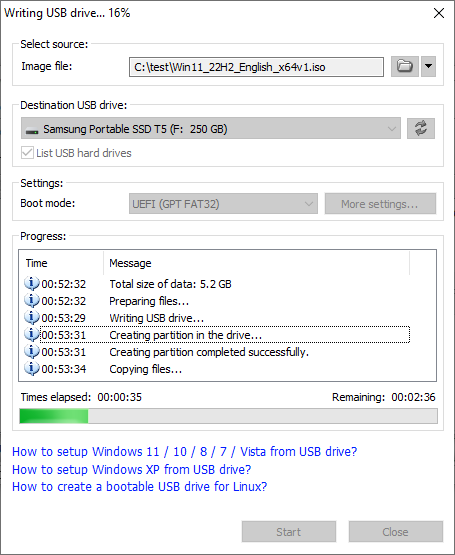
:max_bytes(150000):strip_icc()/007_delete-windows-recovery-partition-4128723-fcdf0b8b44b84e00b08b0da8a89f5052-5befaed89aef4289bc842118b9c4dbfd.jpg)
For example type “ Get-disk | Where-Object IsSystem -eq $true | FT -AutoSize” and press enter. You even can find more specific disk information. It will list all hard disk within a clear table. For instance type “ Get-Disk | FT -Autosize” and press enter. Using pip line in PowerShell will help you run multitask command. Get-Disk command – Manage Hard Disk with PowerShell It will list all current hard disks, even virtual hard disks. Listting current disk with PowerShell is displaying with “Get-disk” command. If you don’t know about PowerSehll or command line interface on Windows, try to learn some basic command line. Let’s manage hard disk with PowerShell with disk and storage cmdlets. No matter what Windows Server you are using 2012, Windows server 2016, it’s applicable for all Windows Servers.

#HOW TO MAKE A WINDOWS XP BOOT DISK USING POWERSHELL HOW TO#
So in this article you will learn how to simply manage hard disk with PowerShell in Windows 10 and Servers. You can still use Diskpart for managing hard disk on Windows operating systems. The old style managing hard disk with Diskpart is already in it’s state. Open PowerShell with administrative privileges by hitting Windows+X on your keyboard, and then selecting “PowerShell (Admin)” from the Power User menu.The PowerShell cmdlets for storage management is new command line tools that help Sysadmins to manage hard disk with PowerShell. Still, if you don’t want to-or can’t-download a third-party app, using the format command is pretty straightforward. Aside from the length of time, you also won’t know if formatting failed-unlikely but possible-until the process is done. Formatting our 64GB USB drive took almost over an hour, and we’ve heard some people complain that it can take many hours for bigger drives.

The downside to doing this is that it can take a long time. You can format USB drives larger than 32GB with FAT32 by using the format command in PowerShell or Command Prompt-the command uses the same syntax in both tools. Format Large USB Drives with FAT32 by Using PowerShell No need to relaunch the tool or anything. If this happens to you, just close the File Explorer windows and try again. If you don’t, the tool will interpret the drive as being used by another app and formatting will fail. One thing to note here: you’ll need to close any open File Explorer windows before you format the drive. This tool took a few seconds to format our 64GB USB drive that took us over an hour in PowerShell. Click “OK” to format the drive.įormatting with this tool is much quicker than the command line method described in the next section. The truth is that FAT32 has a theoretical volume size limit of 16 TB, with a current practical limit of about 8 TB-plenty for most USB drives.Ī window pops up to warn you that all data on the drive will be lost. Specifications put out by manufacturers on file systems as they pertain to drive size created the myth that FAT32 can only be used to format drives between 2 GB and 32 GB, and that is likely why native tools on Windows-and other systems-have that limit. Every major operating system and most devices support it, making it great for drives you need to access from different systems. The advantage to using FAT32 is portability. If you do need those larger file sizes, you’ll need to stick with something like NTFS or exFAT. RELATED: What File System Should I Use for My USB Drive?įAT32 is a solid file system for external drives, so long as you don’t plan to use files over 4GB in size. For whatever reason, the option to format USB drives larger than 32GB with the FAT32 file system isn’t present in the regular Windows format tool.


 0 kommentar(er)
0 kommentar(er)
